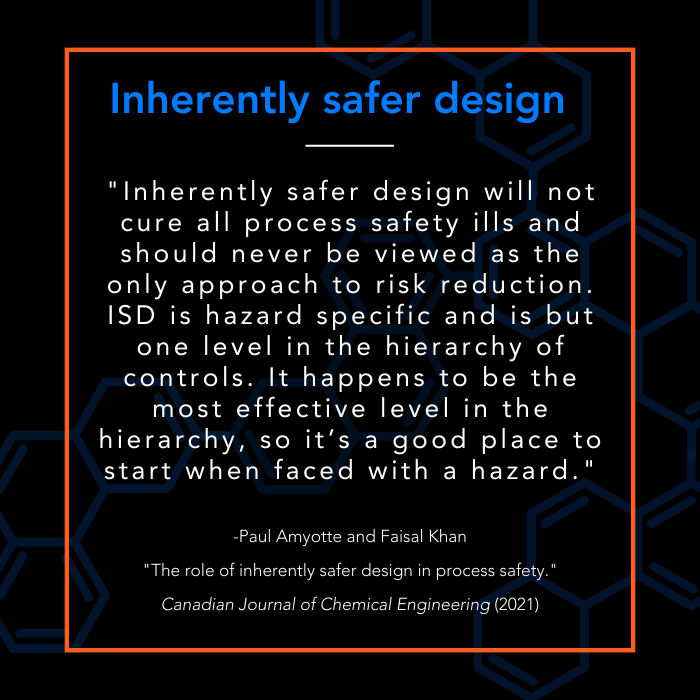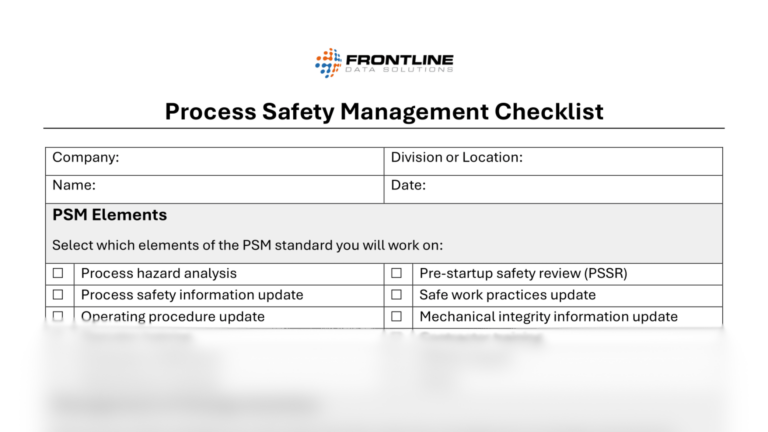The intersection between process safety and environmental protection
OSHA established its process safety management (PSM) standard to prevent workplace incidents caused by hazardous chemicals. But the benefits of PSM extend to many industries—not just those that deal with chemical production. One of the biggest areas where this is true is where process safety and environmental protection meet.
There is much debate surrounding the topic of corporate social responsibility when it comes to protecting the environment. The belief that workers are entitled to workplace protections does not always extend to the planet. But a dedicated approach to environmental hazard prevention is needed in all industries.
In truth, process safety and environmental protection go hand in hand. Having a proactive approach to hazard management can be the difference between a localized incident and a large-scale catastrophe.
Building inherently safer processes and improving training for those processes are two of the most effective ways to reduce hazards. Businesses that take these steps can almost certainly have a net positive impact on the planet, even if that impact is unintentional.
Free checklist!
Get started with this Word template of PSM-related checklist items you can easily edit or expand upon.
How does process safety impact EHS performance?
A comprehensive process safety strategy can transform important leading indicators such as:
- Near misses
- Participation in site safety programs and initiatives
- Employee engagement in safety topics
- OSHA compliance
- Safety training completion rates
But to do this, facilities must integrate safety measures with their overall process design. It’s not enough to make minor corrections here and there. After all, a site can only go through the management of change (MOC) process so many times before doing a complete overhaul.
For process safety efforts to have a real impact, they must address the root causes of inefficiencies and hazards. When they do address these root causes, safety measures impact variables on both sides of the process.
Inherently safer design for process safety and environmental protection
The concept of “inherently safer design” (ISD) proposes that it’s more effective to reduce hazards than to control them. Since Trevor Kletz suggested this approach in the 1970s, it has grown in both popularity and implementation.
ISD includes four main categories of hazard prevention strategies. They include:
- Substitute: Switch to less hazardous inputs like chemicals and materials
- Minimize: Get rid of excess hazardous materials and downsize equipment that can create hazards
- Moderate: Implement process changes that reduce or eliminate hazardous conditions
- Simplify: Make the process as simple as possible
These approaches can transform a process from the inside out. But it’s not always easy to adopt ISD, so many companies turn to less environmentally friendly processes and practices.
ISD Example
One example of this is the dumping of hazardous mine waste into water systems. According to a report by Earthworks and MiningWatch Canada, more than 180 million tons of this waste end up in rivers, oceans, and lakes each year.
Their suggestions for solving this problem are rooted in the principles of inherently safer design. Here’s one example:
“Produce less waste. In some cases, a mining company may prefer to build an open pit mine that produces a large quantity of waste but could instead build an underground mine that targets the ore more precisely and produces less waste that can be more responsibly managed.”
This is an example of the “minimize” category of ISD. By reducing the size of the work area, the company can also reduce its environmental impact. And this is just one illustration of how process safety and environmental protection intersect. These concepts span a variety of industries and regions, multiplying their impact exponentially.
Research on ISD suggests that it is a powerful tool for incident prevention, especially in the chemical industry:

Companies can use this framework to integrate their sustainability goals and their processes. And the best part about this is that it creates positive outcomes for the planet, workers, and the larger community.
Therefore, ISD should be a widely considered practice when completing process improvements or building new systems from scratch. Another way that process safety and environmental protection intersect is in workplace culture.
Training comprehension is a key factor in process safety and environmental protection
Process safety can’t have a positive environmental impact unless workers understand the proper procedures. One of the biggest factors working against widespread PSM compliance is lack of regular training.
A 2020 study in the Journal of Occupational Safety and Health investigated this issue through the analysis of an oil field services company. They issued a survey asking workers 18 questions about site-specific PSM topics. On average, half of the questions were answered incorrectly.
The result of this study highlights the need for more consistent process safety training on topics like:
- Lockout/Tagout
- Hot work permit
- Emergency shutdown
- Management of change
Educating workers
Employers may be able to increase their positive environmental impact by better educating workers. Consider this example:
Company ABC warehouses and ships a variety of products across the country. Their products may contain lithium batteries, inks, or aerosols, all of which are considered hazmat materials. They must comply with federal shipping regulations and ensure that employees know how to properly package and label these items.
The question is: what should the hazmat training look like?
It’s important for Company ABC to teach employees the steps of the packaging and labeling process. But it’s also important to teach them why they should follow the steps carefully. In this instance, overall process safety depends on the actions of the workers. Unless they follow their training, workers could unintentionally injure someone else downstream.
A worker may fail to act on the process safety training they’ve received and cause an incident. But it is the responsibility of the company to ensure workers know the impact of their actions.
A good safety training program teaches workers about the potential environmental impact of chemicals and materials in the process. Basically, most workers will treat these materials with better care to avoid a spill or leak. Thus, companies that invest in high-quality process safety training provide environmental protections whether they mean to or not.
Proactive protections in process safety and environmental protection
The common thread between inherently safer design and comprehensive process safety training is that they are both proactive approaches. Businesses must reflect on their current systems to start making a positive impact on the planet. Do businesses deal with the fallout of environmental crises? Or do they have the foresight to predict and prevent these incidents before they occur?
Hazard management is much easier with the latter approach. It protects workers from preventable workplace hazards. It protects local populations. And it reduces the negative impact that careless business practices have on the environment.
Companies that recognize the strong connection between process safety and environmental protection can finally end the corporate mindset that EHS compliance is a means of avoiding citations. Instead, they can focus on the long-term impact that environmental protections will have on the health and safety of future generations of workers as well.




